Break It Down: How Patrick Peterson and Devin Hester do it

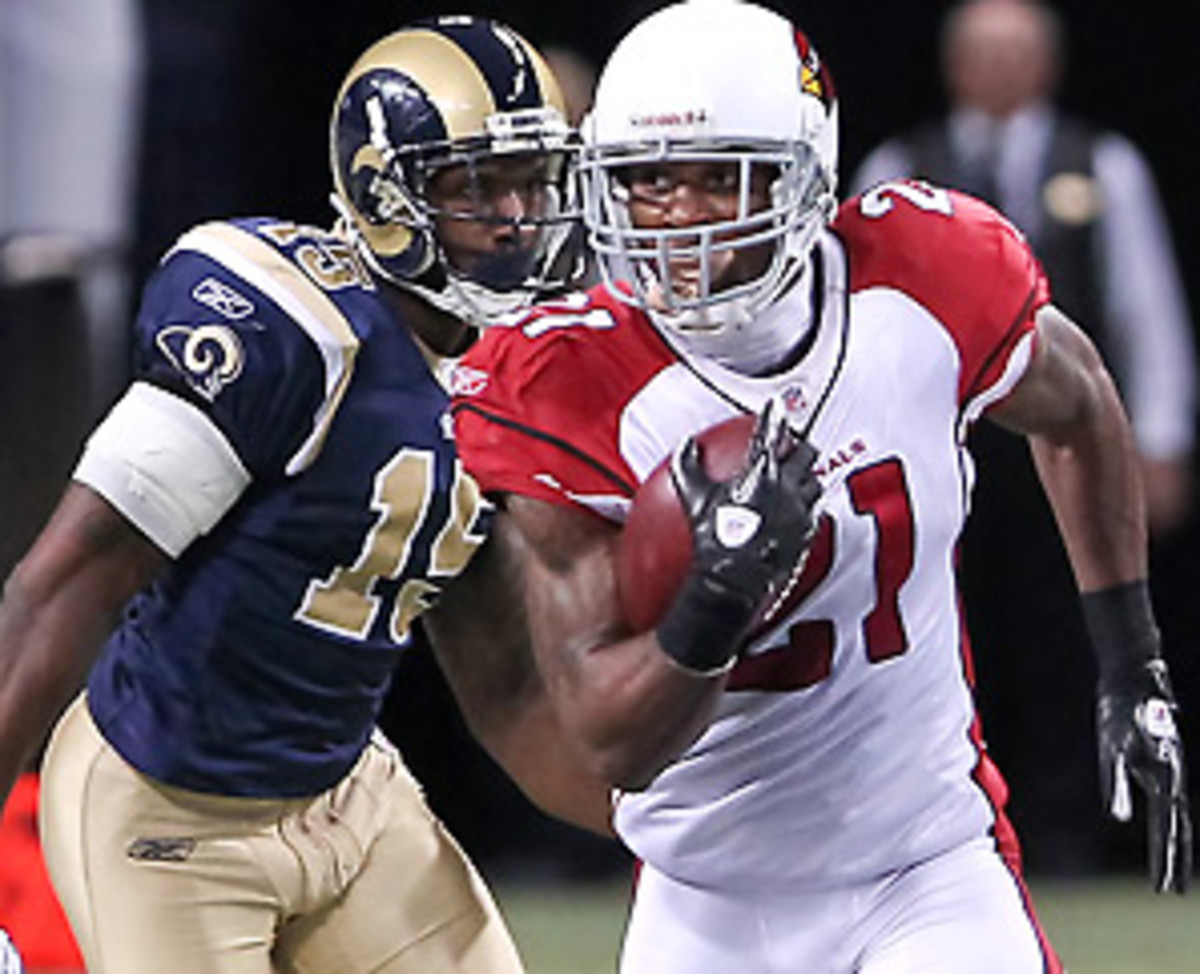
Patrick Peterson's punt return touchdown Sunday was his fourth of the year -- and second against the Rams. (ZUMAPRESS.com)
Devin Hester set the NFL's all-time record for punt return touchdowns earlier this season, when he broke off a 69-yarder against Carolina. He later added to his total against Detroit, giving him 12 TDs on punts in his career.
But he might soon have company in the record books, if Arizona rookie Patrick Peterson can maintain his current pace. Peterson housed his fourth punt return of the year Sunday against St. Louis, tying the league's single-season mark.
How has Peterson done it? Well, not surprisingly, there are some similarities between the two dynamic return men.
All of the great returners possess two key characteristics: Speed and vision. Peterson flashed both off Sunday on an 80-yard return against the Rams. He fielded the punt leaning to his right, threw on the brakes and cut back to his left after taking a glance at his blocking setup:
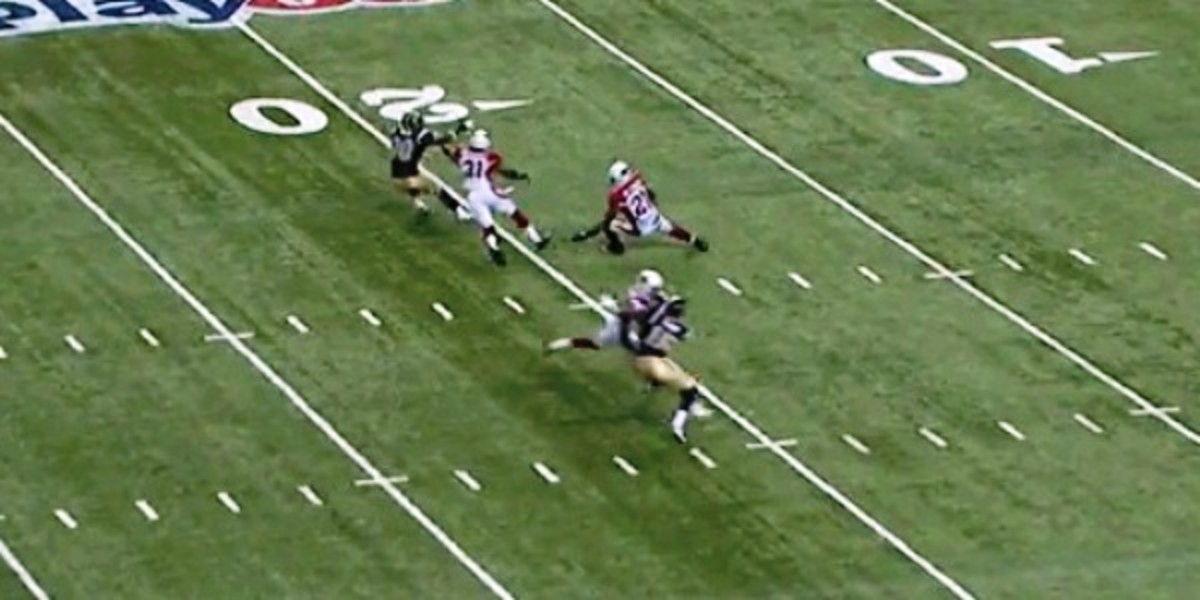
A return man capable of quickly changing direction is extremely dangerous for the coverage team. Why? Well, kick coverage generally assigns players to "lanes" -- in other words, specific areas of the field to maintain focus. That's done in an effort to hem in the returners, allowing the defense to then close and blanket the return man.
A cutback, though, throws everything out of whack, if a return man is fast enough to exploit the resulting gaps.
Peterson, of course, is:
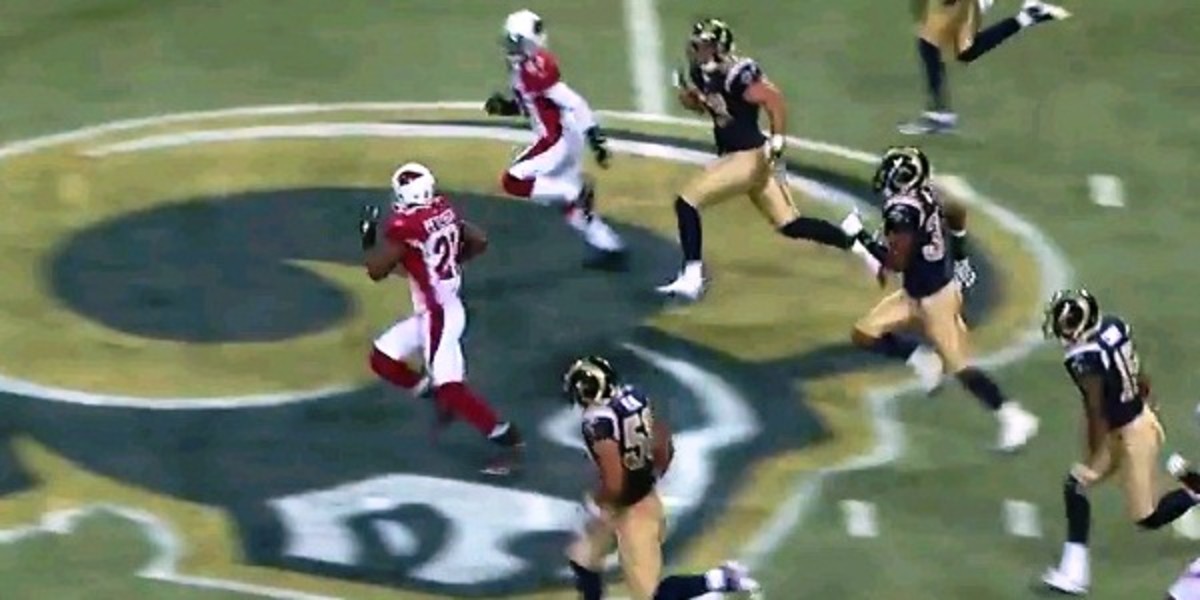
At that point of the return Sunday, the Rams' special teamers may as well have just headed back to the sidelines. They weren't going to catch Peterson from behind. That explosive speed gives coverage teams very little margin for error -- one St. Louis player missed a tackle as Peterson broke into the middle of the field. Once that happened, it was all over.
But back to the change-of-direction idea ...
We can see it again on Hester's record-breaking return vs. Carolina earlier this season. Hester started to his right, which led to the Panthers' coverage unit, ever so slightly, collapsing in that direction. He then reversed field and took off to the left, where he had a wall of blockers set up:
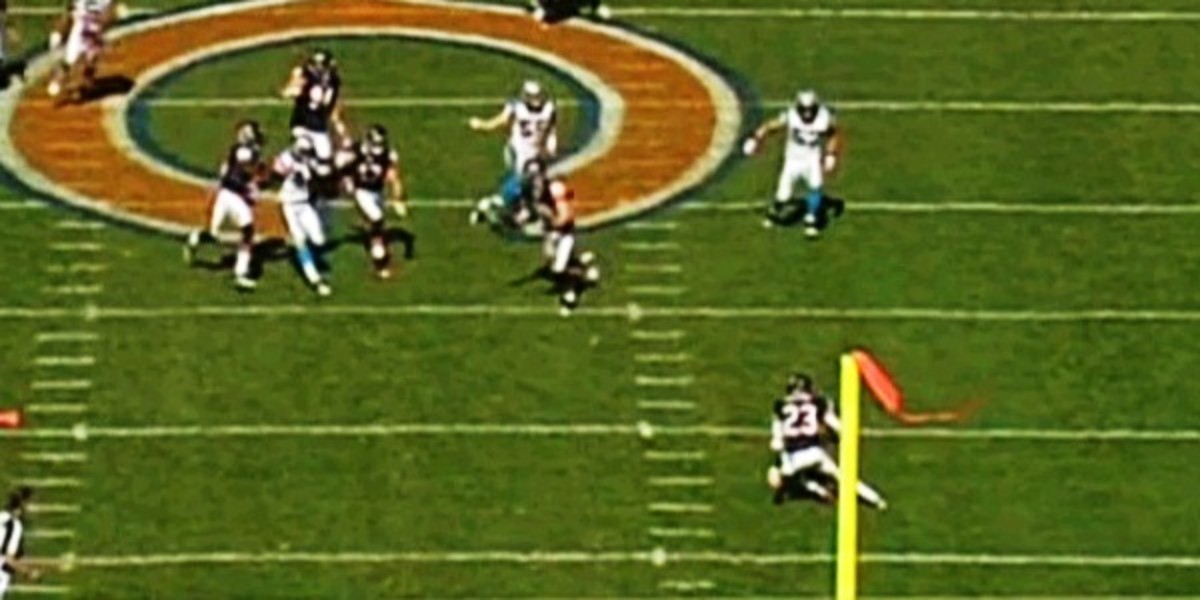
Peterson's first punt return for touchdown against St. Louis this season, a 99-yard effort in overtime in Week 9, resulted from a similar situation.
St. Louis is actually in decent position when Peterson fields the punt on his 1-yard line -- usually a no-no for a return man (a point we'll come back to). The Rams had him blocked off from going to his left up the sideline and, at the start of the return, had the middle of the field controlled.
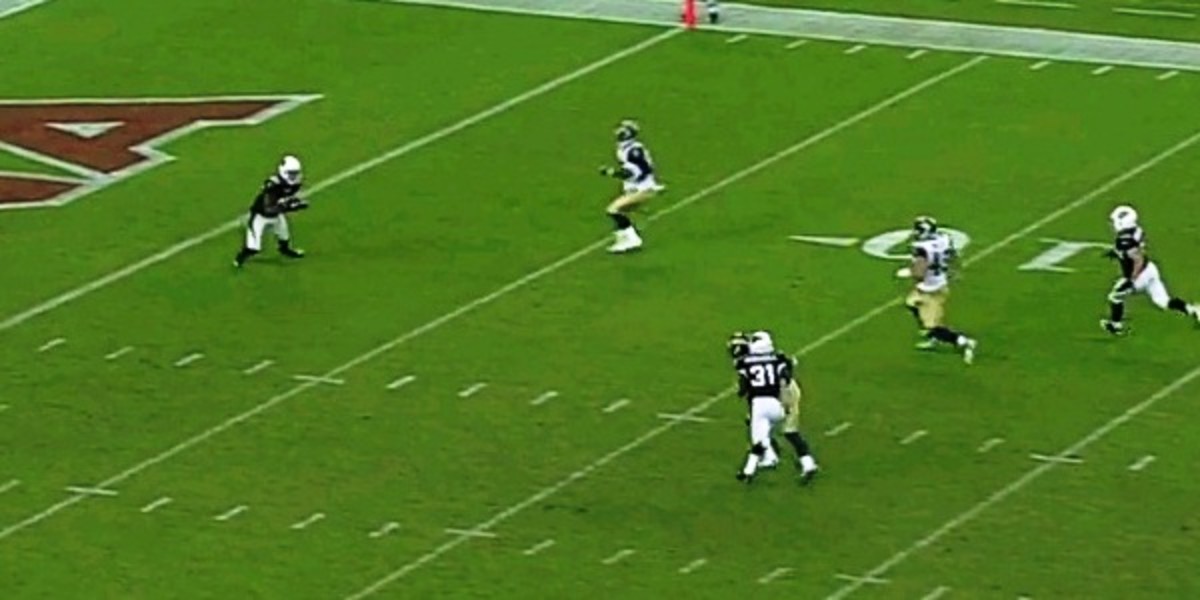
So Peterson swings wide, across the hash marks on the other side of the field and almost all the way out to the other yardage marker. But before he gets there, he cuts back, turning up to the middle of the field.
As a result, the Rams that had position on his left closed and then lost contain, while their teammates in the middle of the field simply missed Peterson. His one simple change of direction took almost every single St. Louis defender out of his coverage lane, meaning Peterson had clear sailing once he broke through the initial line of defense.
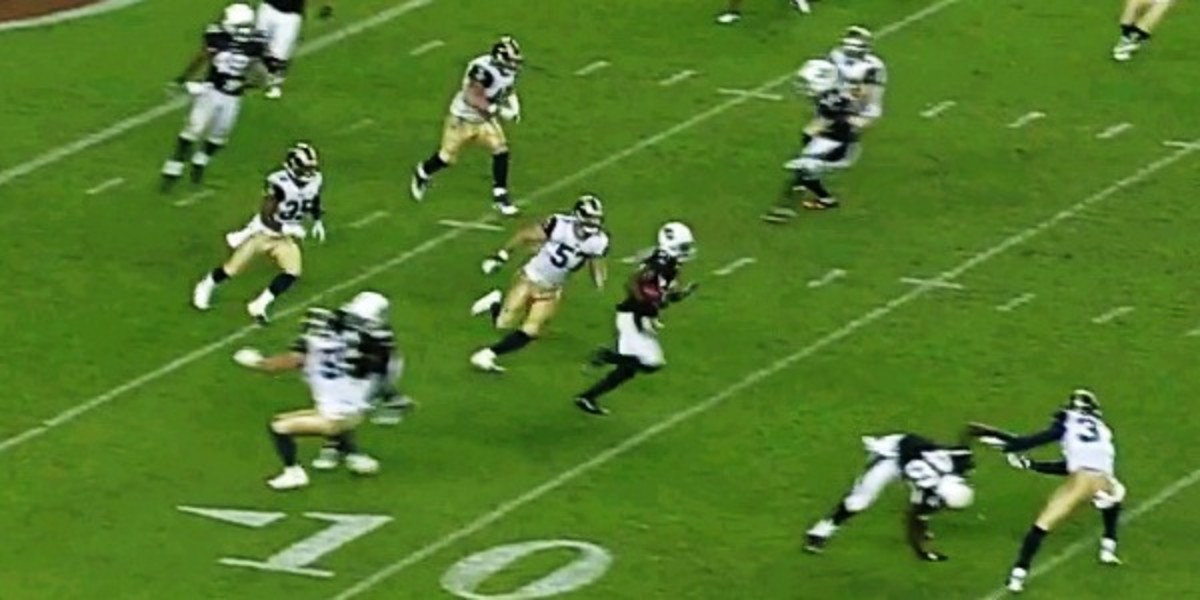
And that all goes back to that idea that coverage teams usually will get just one good shot against a great return man.
Baltimore missed its chance on Peterson in Week 8, and that was that.
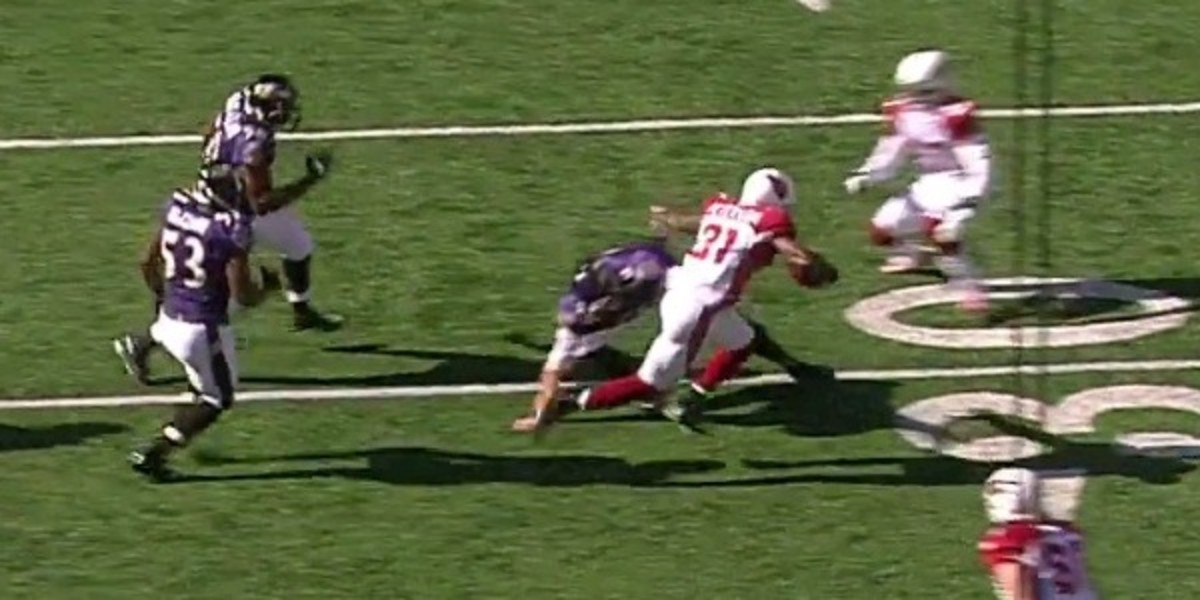
OK, back to that overtime TD return by Peterson, when he fielded the ball on the 1. For just about every return man in the league in just about every situation, that's a terrible decision -- anything inside the 10 is questionable; anything inside the 5 should be let go, more often than not, in the hope that it will bounce into the end zone.
The one benefit of returning a punt that shouldn't be returned is that it can catch the coverage unit off-guard, leading to a situation similar to an "outkicking the coverage" problem.
On Peterson's first touchdown of the season, Carolina's Jason Baker punted from the Arizona 47 and uncorked a high kick that came down at the 11. The two most likely scenarios were that Peterson would let the ball go or fair catch it.
Instead, he took off -- and by doing so, left two Panthers defenders, who had overrun him thinking they might need to down the ball, trailing.
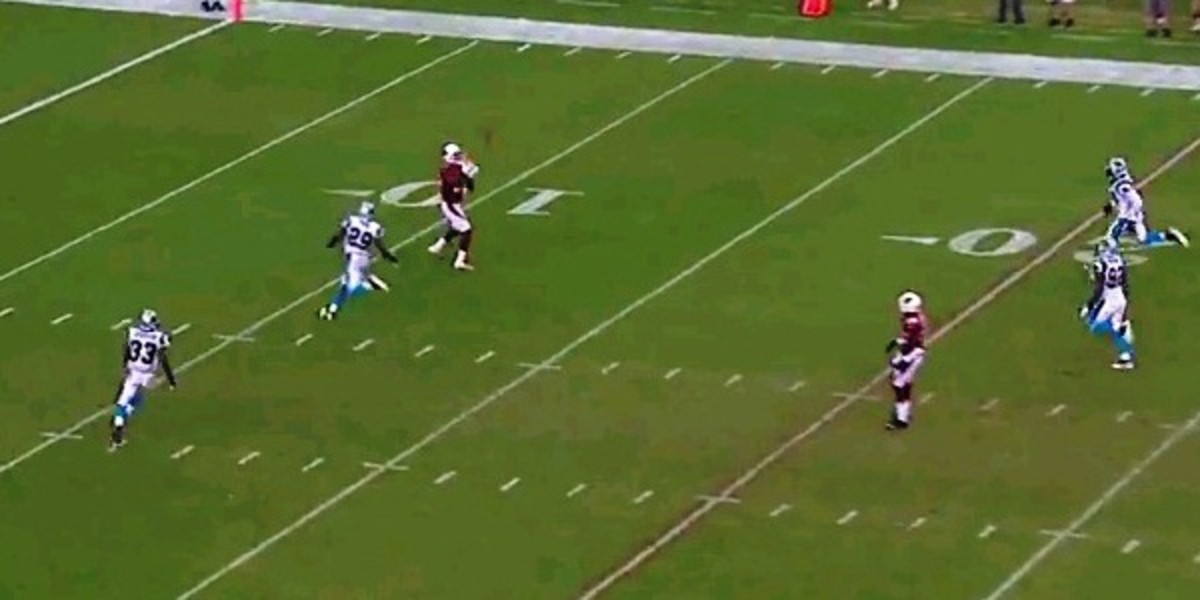
The usual idea of outkicking coverage involves a punter booting one so far that he has no defense by the return man when the ball comes down. But in this case, Baker's hang time breaks down the Panthers' kick coverage, giving Peterson some room to maneuver when he decides to take off.
Here's the more traditional look at it: In Chicago's Week 10 win over Detroit, Lions punter clobbers one 60 yards. Fine, great kick, right? Only ...
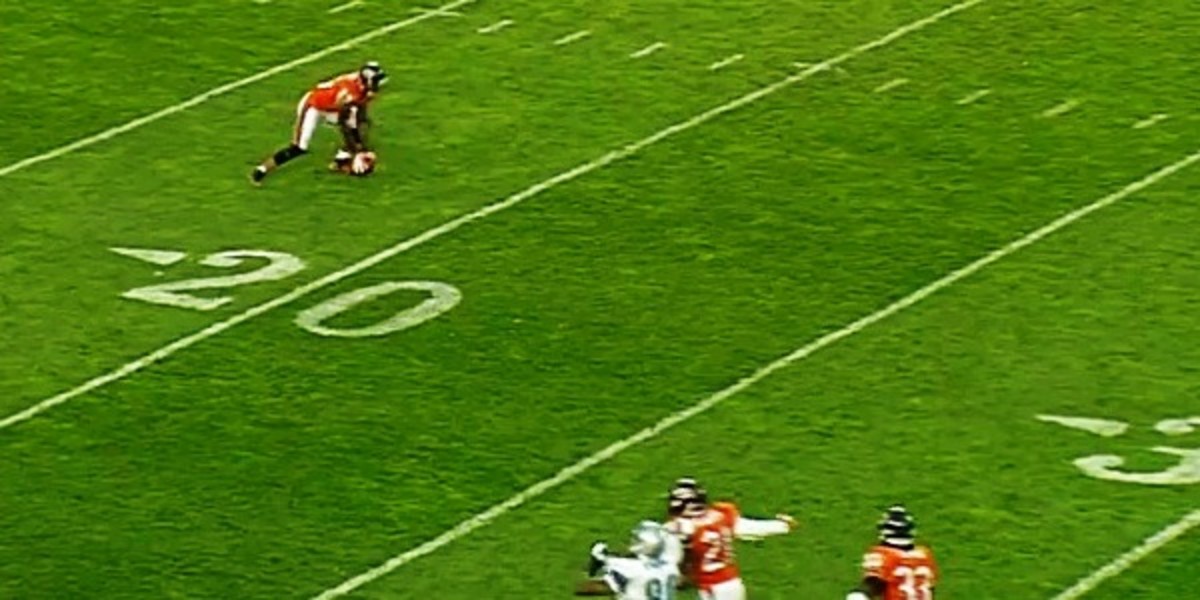
There's no one there. Hester not only has time to pick the ball up off the turf, he also manages to sneak a peak upfield and see where his running lanes are. And with Detroit's coverage already closing that vice toward Hester, the entire left sideline opens up (thanks to FOX's Brian Billick for the yellow line here):
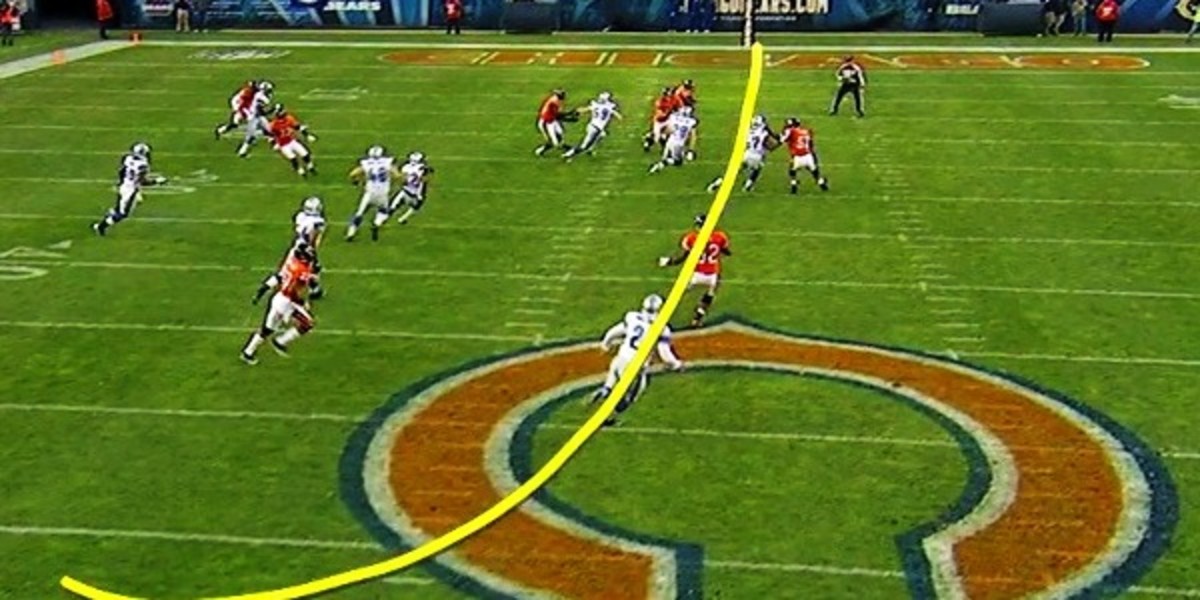
The only defender left with a shot at Hester is the punter, which is like someone trying to catch a bullet with his bare hand. Forget it.
The combination of shaky coverage principles and great speed and vision leads to a Hester touchdown.
The same idea is at play in Peterson's return against Carolina. With two players overpursuing the ball and everyone else collapsing on Peterson's position at the left hash mark, the rest of the field spreads out.
Stop me if you've heard this one before: Peterson takes off to his left, makes one move back to his right, breaks one tackle and has nothing but green grass between him and the end zone.
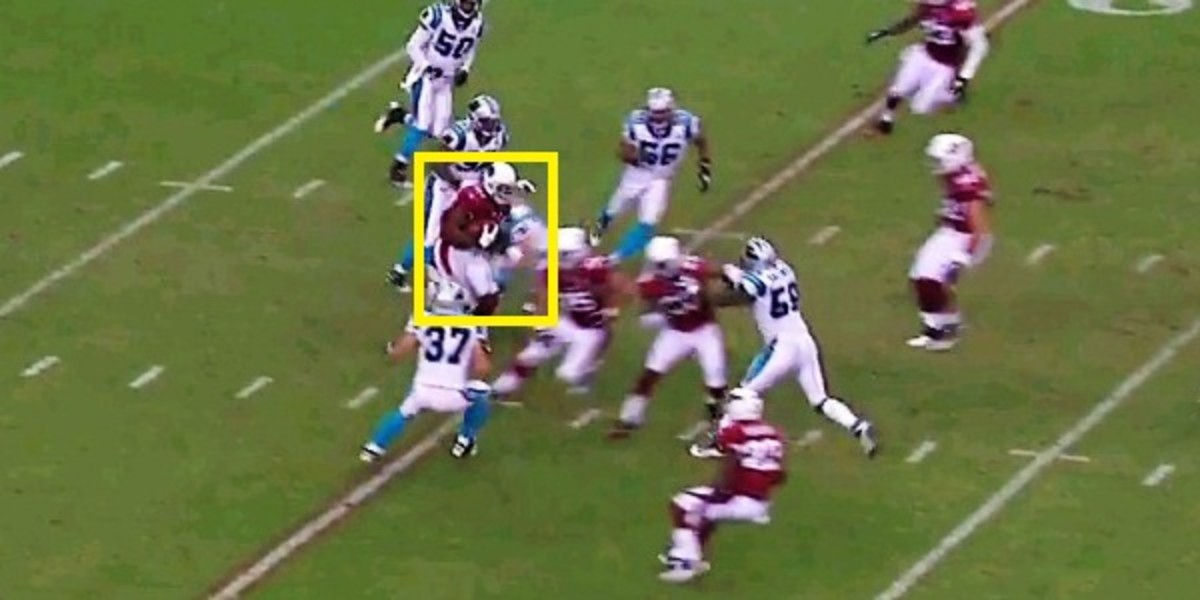
Not everyone can do what Hester and Peterson do, but it's not that hard to see why they're so good at it. All it takes it one little mistake from the opposition -- a poor punt, a defender getting out of his lane, an overeager coverage team trying to close too soon -- and both players are capable of breaking loose.
